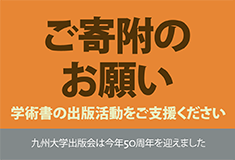目次
Foreword
Preface
Acknowledgments
Chapter 1 Introduction
1.1 Drying media
1.2 Moisture in porous materials
1.3 Heat and mass transfer
1.3.1 Heat transfer
1.3.2 Heat sources
1.3.3 Mass transfer
1.3.4 Heat and mass transfer under vacuum
1.4 Mass and energy balances
1.5 Drying rate curves
Nomenclature for Chapter 1
References for Chapter 1
Chapter 2 Experimental methods in drying
2.1 Measurement of drying rates
2.1.1 Forced convection
2.1.2 Natural convection
2.1.3 Vacuum
2.1.4 Microwave
2.2 Measurement of material temperature
2.2.1 Radiation thermometer
2.3 Measurement of moisture content of wet materials
2.3.1 Local moisture content
2.4 Measurement of permeability and capillary pressure
2.4.1 Drainage methods
Nomenclature for Chapter 2
References for Chapter 2
Chapter 3 Drying models
3.1 Air drying
3.1.1 Model for drying periods
3.1.1.1 Configuration of water
3.1.1.2 Luminosity on the surface of the material
3.1.2 Model for standardization of drying curves
3.1.3 Standardization of drying curves
3.1.4 The first falling rate period and the critical moisture content
3.2 Superheated steam drying
3.2.1 Evaporation zone model
3.2.1.1 Constant rate period
3.2.1.2 Critical moisture content
3.2.1.3 Falling rate period
3.2.2 Drying rate curves at atmospheric pressure
3.3 Drying under vacuum
3.3.1 Drying rates in air
3.3.2 Drying rates in superheated steam
3.3.3 Drying rate curves in air and in superheated steam
3.3.4 Drying under super-cooling
3.4 Microwave drying
3.4.1 Drying rate curves
Nomenclature for Chapter 3
References for Chapter 3
Chapter 4 Physical properties of porous materials in drying
4.1 Pore structure
4.2 Liquid-solid interface
4.3 Heat and mass transport properties
Nomenclature for Chapter 4
References for Chapter 4
Chapter 5 Miscellaneous drying methods
5.1 Steam drying by humidity-swing drying schedule
5.2 Retention of volatile substances
Nomenclature for Chapter 5
References for Chapter 5
Author index
Subject index

